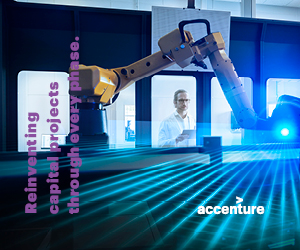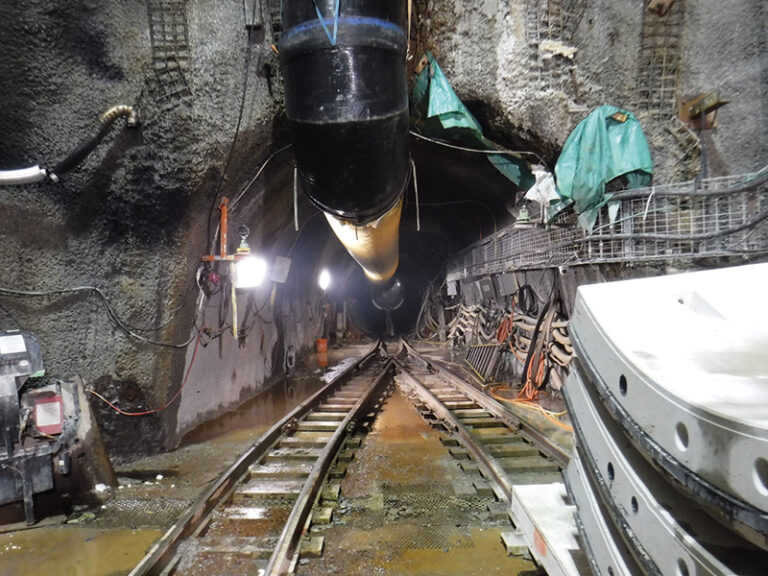By Anna Robak
Artificial Intelligence (AI) is changing the municipal transportation landscape at a pace that few can keep up with. But the risks and costs of new tools and technologies can be an impediment even to digitally savvy communities keen to invest in more efficient systems.
AI has the potential to improve road safety, predict traffic flows following a natural disaster, detect invisible defects on assets, generate the design for a new bridge, and empower citizens to find the information they need, all in a user-friendly way. Each can be valuable to a municipality, but not all come with the same level of investment or results.
Developments in AI have been coming forward at a furious pace over the past few years, following the release of ground-breaking large language models in 2022. But separating hype from reality and taking a benefits-first rather than tech-first approach, are significant challenges.
We wanted to step back and review available technologies, how they function and, perhaps most importantly, what real benefits they can provide for municipal transportation. Here are five practical steps for starting your AI journey.
1. Identify your pain points
Start with your organization’s pain points, without restricting your thinking to AI applications. Where do you see the biggest frustrations, costs, and risks? These might include concerns around safety incidents, gaps in accessibility and inclusion, inefficiencies in routing or scheduling, or rising fuel and maintenance costs. It’s a good idea to consider the people involved, and how each is affected, internally and externally.
Establish your objectives in managing these pain points, consider what you’re already doing to address them, and think about how close they’re taking you to meeting your goals. It might make more sense to scale, or completely replace, existing efforts.
AI may not be part of the solution to your biggest problems. That’s something you’ll work out through exploration.
2. Do an industry scan
Once you’ve identified your pain points, investigate what solutions organizations like yours are already doing in this space and the benefits they’re seeing through AI applications or other approaches. Look for these cases in industry forums like your provincial municipal association or the Municipal Information Systems Association.
You will likely want to focus on solutions that have proven positive impact for at least one of your organization’s biggest pain points. Quantitative evidence, compelling stories, and testimonials will help you decide if the risk and investment are worth it, and help make the case to decision makers and community members. Having colleagues in other municipalities who have already done it will provide you with a greater understanding of the ups and downs of the process.
The most prevalent uses of AI in the municipal transportation industry include traffic management and optimization. AI-powered systems can analyze real-time data from traffic cameras, sensors, and GPS to optimize traffic flow, adjust signal timings, and reduce congestion. These systems help cities manage urban mobility more efficiently, minimize delays, and improve fuel efficiency.
There are several additional uses that can provide significant value to a municipality. These include:
Data from Autonomous Vehicles & Driver Assistance improves road safety by supporting real-time decision-making and enhancing road safety.
Predictive Maintenance Maintains the longevity of transit systems through predictive technology that detects potential issues in vehicles, roads, and infrastructure before failures occur, reducing repair costs and minimizing service downtime.
Public Transit Optimization Makes public transit more consistent by optimizing bus and train schedules through real-time sensors, reducing wait times and improving overall reliability.
Logistics & Route Optimization Reduces route times in freight and delivery services through forecasting technology, decreasing delays and fuel consumption.
Smart Parking Solutions Minimizes driver congestion by identifying available parking spaces though real-time sensors, guiding drivers to reduce search time.
Based on the different tools available, a municipality can determine which one(s) best address the corporate priorities.
3. Evaluate AI costs, risks and practicalities
Once you have identified the AI applications that will help you solve your biggest pain points and achieve your organizational goals, evaluate potential applications against your organization’s typical prioritization criteria. Once you’ve determined an impactful application that aligns with your organization’s objectives, at a minimum, create a checklist to make sure you consider:
Costs
- Data preparation, storage and consumption
- AI tools and platforms – licensing and cloud
computing costs - Upskilling staff
- Managing risks
- Managing users
Risks Could this initiative introduce new risks that the municipality can’t accept (e.g., data privacy issues)?
Skills Do you have employees and suppliers with the skills and track record needed for implementation?
Appetite Are teams and individuals excited to be involved? Staff need to be engaged early, so they can feel comfortable and understand how it will help them in their work.
Data Does the municipality have enough good-quality data that can be kept in one location and accessed for analysis? If not, how much time and cost will it take?
With each of these considerations evaluated, you’ll be able to appreciate the real cost of AI implementation, and its overall value based on the benefit it provides.
4. Start small
Now that you’re armed with evidence that you have a project that could reduce your pain points, the next step is to identify a small pilot project.
First, decide your level of openness and transparency with the public about the project and any data collected. You have a compelling reason for the project (safety, optimization, cost savings), which will be critical for their support. Consider two-way engagement with your most interested and affected parties and create working groups to break through challenges and build on good ideas.
There are seven important elements involved in the successful implementation of any AI solution:
Leadership engagement It is critical to take your executive team on the journey so that they can prioritize these efforts and share their benefits widely across all parties. This approach helps prevent political agendas getting in the way of progress.
A team-based approach to data governance Instill a culture where employees are aware of their role, and the importance of it, in managing data. To this end, provide clarity on data roles and responsibilities. For example, does your implementation need a product owner responsible for representing the customer needs and guiding a development team?
Expectations and Accountability Take a people-first approach to using data (public benefit versus exploitation). This will reduce problems such as residents believing their data will be used against them, such as data misuse to justify higher rates or development costs.
Skills and Awareness Make sure skilled personnel hold defined responsibilities for data collection and awareness, and ensure all parties are aware of your data collection and use. This approach reduces the likelihood of sensitive data being mistakenly used or exposed, or of data being misinterpreted.
Costing and Budgeting Have a system for checking costs related to AI, including operations and maintenance, staffing costs, and power use. This information helps make future decisions about implementing AI solutions versus good basic data analytics. It is crucial to establish key performance indicators (KPIs) to track progress and measure the benefits of these systems. This ensures that decisions about implementing AI versus using basic data analytics are well-informed, based on metrics such as cost savings, efficiency improvements, and overall system impact.
Preparing data Make sure new data is synched with existing, and that it is stored in a secure location. This preparation includes understanding of legal and regulatory measures regarding the storage and use of personal data.
Seeing the whole, and the future Be clear about how this solution fits into a longer-term plan, who will need to be involved in the long term, and how it will help your municipality achieve ambitious goals.
5. Expand: Prepare your whole organization for AI and data governance
The pilot will begin to give you a sense of the costs, benefits, and challenges of your solution. When transitioning from a pilot to a wider implementation for business as usual, key considerations include organizational alignment, and funding. Data governance, and engaging the whole organization, are especially critical. To identify opportunities for organizational alignment and governance, a data mapping exercise can help all parts of the organization have discussions about see the value and potential in connecting their data.
Artificial Intelligence solutions have the power to create significant benefits for communities. Many municipal transportation cases have already shown quantitative benefits of AI solutions. Now is the time to invest in a path forward. With a thoughtful approach in place, the right investment in the right solution for the right reason can further the strength, safety and/or efficiency of municipal transportation operations.
Anna Robak is the Executive Director, Research & Innovation, WSP in Canada.
[This article appeared in the September/October 2025 issue of ReNew Canada.]
Featured image: (Getty Images)












